Things You'll Need
Painting supplies: watercolor, acrylic, oil, alkyd, pastels, colored pencils -- your choice of medium.
Sketch materials -- charcoal or soft pencil, drawing paper.
Observation trips to misty forests, valleys, landscapes and/or photo references.
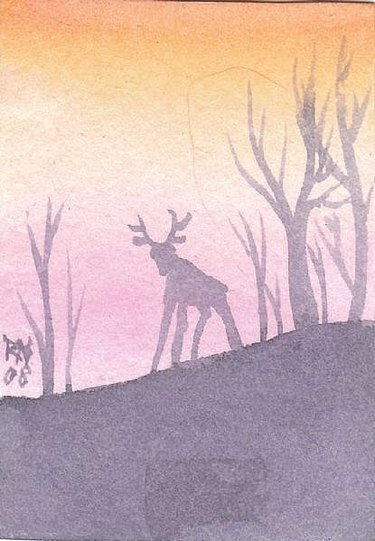
There are several ways to create mist and fog in a landscape painting. You can do this in any medium from watercolor to acrylic and oils -- and the place to start is right at the beginning in your value drawing.
Step 1
You can turn a scene that is not misty into one that is by remembering what mist does to a landscape. In the Mist was created entirely from imagination, painted from the memory of numerous misty forest mornings seen in life and in movies. Don't discount good video as a source of inspiration. Decide your subject. Do you want the entire scene misty as in my example painting, or do you want to show misty areas like valleys between sharply defined mountain peaks to establish scale?
Video of the Day
Step 2
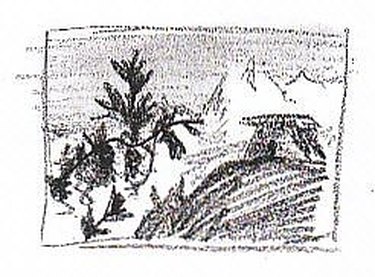
Create a good value drawing in charcoal or soft pencil -- high number B range pencils. Sketch fast and bold, do thumbnails, work out your composition and where the mist is. In a non misty painting, depth is created by putting the most contrast in the foreground, a bit less in the middle ground and the least contrast in the background. In a fog painting like In the Mist, there is no background, and the middle ground becomes as light and indistinct as the background would be if it wasn't foggy. Visibility has a very short range. Example 1 is a thumbnail value sketch of a scene that's not misty -- the foreground is that dark pine branch to the left, the middle ground is the hill with the flat-top building on it, and the background is the mountains and sky. There's no mist in it.
Step 3
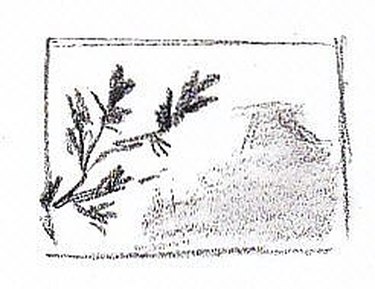
The next thumbnail value sketch shows the same scene the way it would look in a heavy fog. The background disappears entirely. The middle ground becomes as soft and light as the background and loses details, while the very close foreground branch is still in high contrast. It's a simpler composition. This is how I planned and created In the Mist -- I kept it simple, lightened it and muted the values.
Step 4
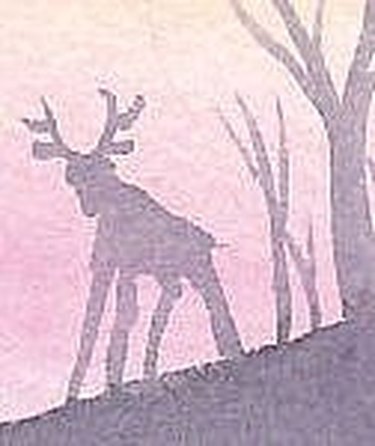
Use color to flatten the picture plane. In my watercolor painting I pushed the background forward with warm dawn colors while pushing the figures back with cool colors. This is the reverse of what you'd do to create atmospheric perspective with color, and it results in the morning mist shortening the depth of the picture plane. You can't see any fields or anything beyond that hill, because the mist is too heavy, but it picks up the color of morning sunlight and is plausible.
Step 5
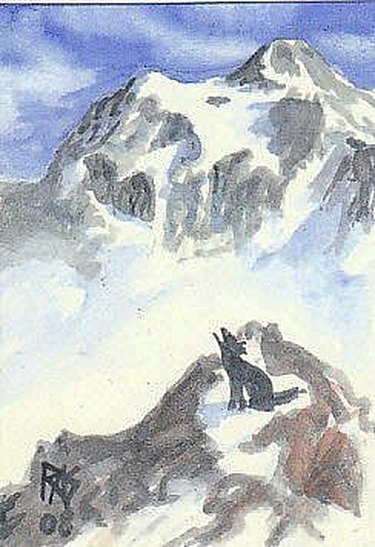
With oils, pastels or acrylics, you can take a soft dry brush and lightly go over a misty area with gentle circular strokes to soften the outlines, obscure details and blend the colors. This is most effective as a finishing touch -- if you have the values right and you didn't add many details to the mist-muted elements, as well as cooling the colors rapidly and pushing the background forward, then those light circular strokes just give it a soft misty texture. Study the backgrounds of fantasy paintings by Frank Frazetta and Boris Vallejo for successful mist effects surrounding a warm, detailed and dramatic foreground figure. In watercolor you can get blurred effects with wet in wet washes as I did in the dawn colors behind the stag silhouettes. Also look at Chinese and Japanese paintings of mountains -- very often a dark peak will fade off suddenly to white, while a foreground element will cut in front of that white foggy area. Here is another painting where I've implied fog between the two peaks by letting the snowfall lower on the far mountain fade off into blue streaks that become vaguer and looser and finally vanish to white behind the dark foreground peak -- fog in the middle between two mountain peaks. Notice how the background has more contrast than the middle ground (it's not in fog) but less than the foreground peak. Remember that fog Lightens, Reduces Contrast, Cools and Mutes Colors, Eliminates Detail, Softens Edges and Shortens Visibility -- flattens the picture plane. You can turn any landscape misty with some practice.
Tip
If you have a landscape painting that is starting to look murky and overworked, lighten it and see if you can turn it into a foggy scene.
Warning
Use proper ventilation when working with thinner-based paint or mediums, even odorless turpentine has fumes that can hurt your health but are harder to detect than odorous turpentine. Keep thinner based art supplies away from open flame.
Video of the Day